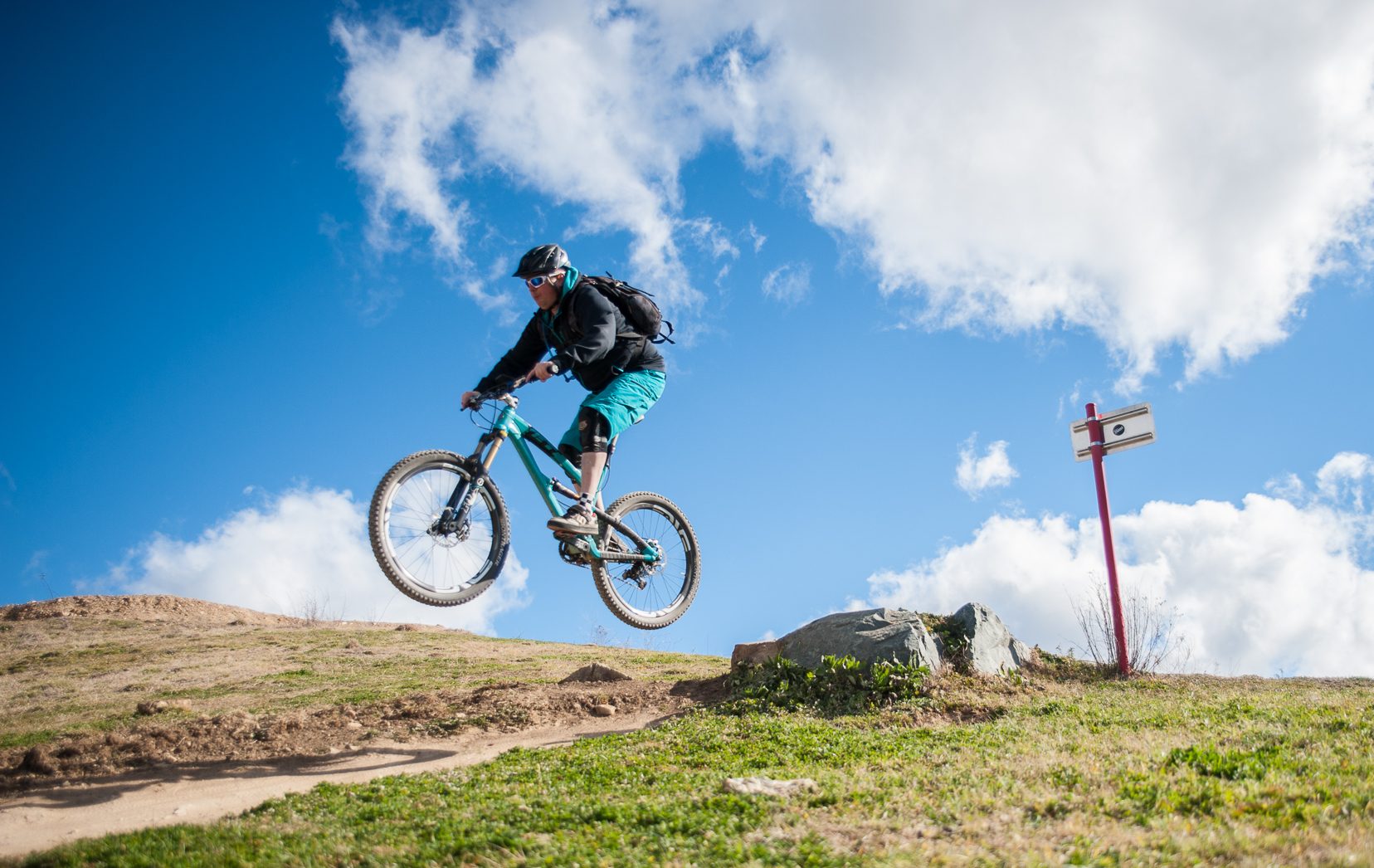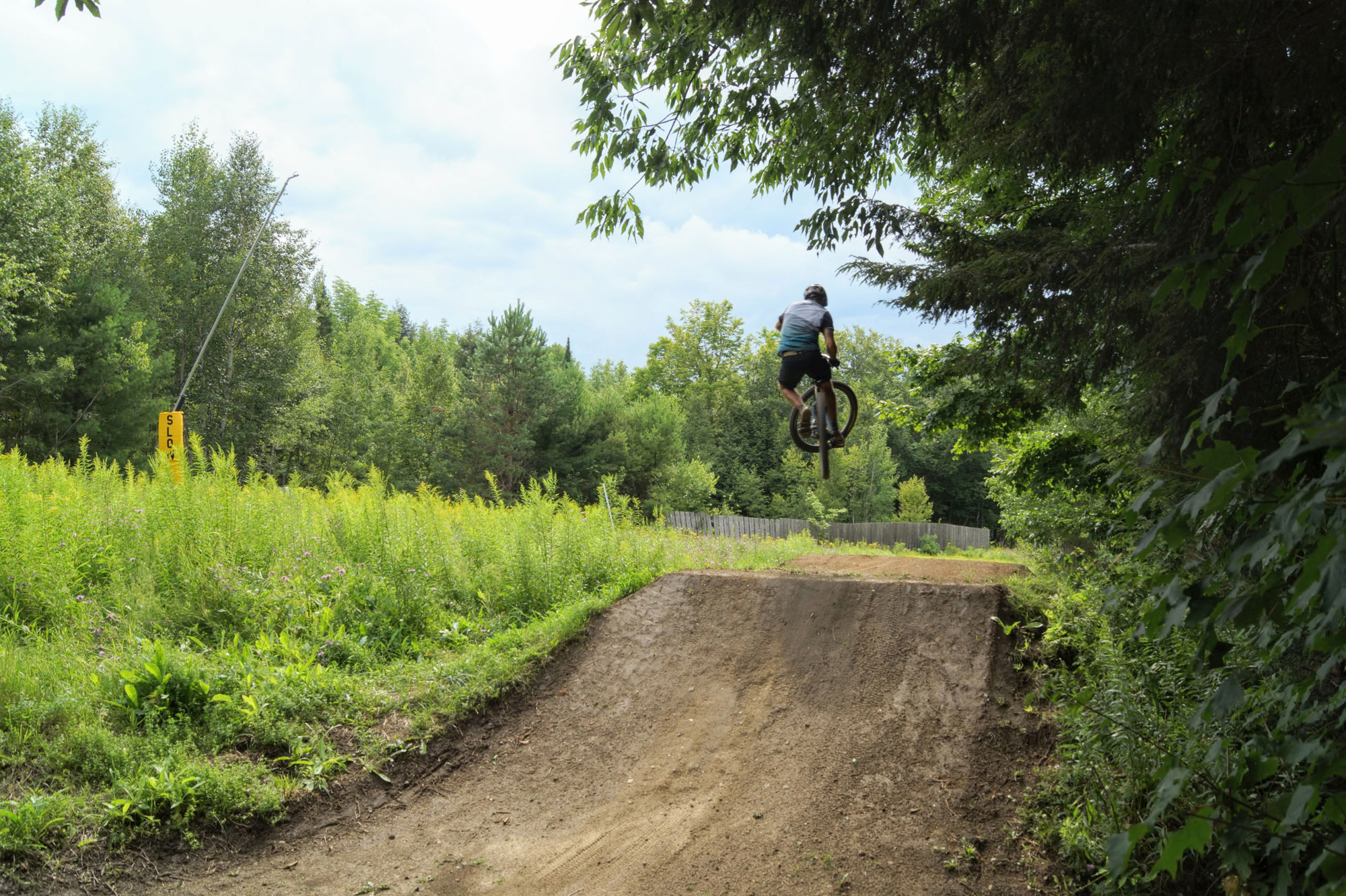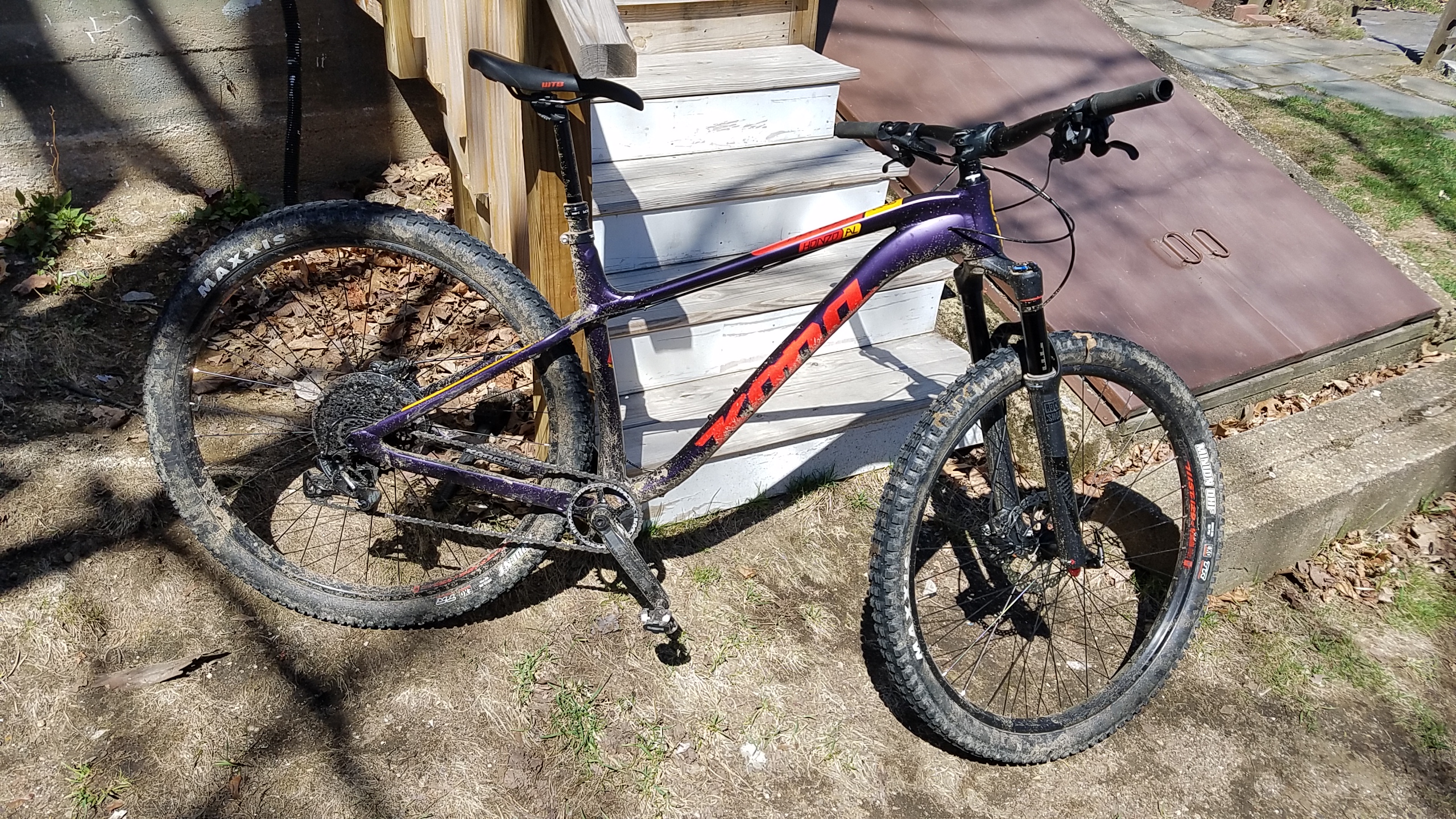As fall starts to feel more like winter, it’s only natural to get stoked for snow and ice. While you get busy sharpening your ice tools and scraping the summer wax off your skis this autumn, don’t forget to give your mountain bike some attention before putting it away for the season. Taking a few steps before storing your bike can ensure you hit the dirt next spring without any issues and is a smart strategy for protecting your investment. After all, if you’re like many mountain bikers, your ride represents a significant percentage of your net worth.

1. Clean
Mud, dirt, and grime can all cause corrosion, especially if they’re left sitting on your bike for months on end. Before putting your ride away after that last session at Kingdom Trails, give its frame and components a deep clean. Take off any bottle cages, bags, and GPS/light mounts to make sure you get all the nooks and crannies.
2. Lube
You want to store your bike well lubed. Lube keeps moving parts operating smoothly, prevents rust, and will keep cables from snapping in the spring. The chain is the obvious target for lube, but don’t forget brake and derailleur assemblies, cables, and levers. Does your bike have a dropper post? Drop a little lube on its lever as well so that it actually drops the next time you ride Big Bear at Bear Brook.

3. Seals
Front forks, rear shocks, and dropper posts all have seals to help keep dirt and dust out of the shock and away from its moving parts. A few drops of suspension-specific lubricant will do the trick, keep seals from drying out over the winter, and have your ride ready for these early spring destinations.
4. Tires
Store your bike with the tires pumped to a pressure higher than you normally ride at, but make sure not to exceed the maximum tire’s maximum psi (it’s printed on the sidewall). Storing your bike on flat tires can cause them to lose their shape (affecting traction) and degrade (shortening their lifespan). Tires lose about 1 psi for every 10 degrees the temperature drops—you’ll want to keep this in mind, especially with the bitterly cold New England days in the near future. Tires will also slowly leak air, so set a calendar reminder to check on them every few weeks.
There’s a lot of debate about what to do with tubeless tires in the winter. The easiest solution is to give your wheels a spin every time you check their pressure. This moves the sealant inside your tires around and prevents it from solidifying.
5. Dropper
Dropper posts have made mountain biking easier, safer, and more efficient—all of which is good. The bad—they’re expensive and notoriously finicky. When putting your bike away for the winter, make sure your dropper is in the “up” position. A dropper in the “down” position puts significantly more stress on its seal and is an invitation for future problems.

6. Send It…to a Pro
Get your spring tuneup in the fall. When the warm weather hits, everyone is bringing their bikes into the shop, which is a significant contradiction from the relative calm of autumn. Bringing your bike in now means it’s likely to get a more attentive tune—and when the good weather arrives, you’ll be ready to ride, rather than queuing up at the shop. This is also a great time to take care of the maintenance you’ve been putting off, like having your suspension serviced and tuned.
7. Replace
If you needed bike parts this past season, odds are you discovered the supply chain issues that plagued the bike (and near every other) industry. While you can take your chances that the supply chain is flowing and parts are readily available in the spring, a safer bet is to use the winter—and its long lead time—to order what you need now. It’s also worth considering ordering the parts you think you’ll need next season, like a chain, brake pads, or an extra derailleur hanger.

Where to Store Your Bike
Some riders are blessed with a variety of places to store their bikes and can choose between everywhere from a garage, shed, or gear room. For others, where to store their bike often comes down to wherever there is room. Whether you keep your bike in a dedicated garage space or in your living room, here are a few rules to follow for storing your bike.
Secure: Mountain bikes are a hot commodity and the used bike market is flourishing. This has led to a rise in bike thefts. Make sure wherever you’re keeping your bike this winter is secure and consider adding another level of protection. For example, a cable lock in addition to your locked garage.
Out of the Way: Mountain bikes are subject to enough abuse on trails like Salmon Brook at Franklin Falls, no need to beat them up over the winter. Store them in an out-of-the-way place where you won’t bang or bump into them. A bike bag or cover is an easy way to provide additional protection.
Store it Level: Hanging mountain bikes from either their front or rear wheel is a popular method, especially for those with space constraints. However, storing your bike level will keep fluids in parts like your suspension, dropper, and brakes where they belong and help you avoid issues in the spring.
Avoid Concrete: If you’re not hanging your bike this winter and opting to keep its wheels on the ground, avoid concrete. Concrete dries out tires and leads to a host of issues that shorten their life. If you must store your bike on a concrete floor, consider placing a rug or mat between the tire and the ground.
A Few Other Things
As you’re preparing your mountain bike for winter storage, take a few minutes to get your gear ready for the off-season as well. Clean the energy gel and bar wrappers out of your pack, scrub your hydration bladder and bottles, and replenish your maintenance kit. And if you’ve had your eye on a new piece of gear, think about pulling the trigger now—items like helmets, packs, and shoes were almost as hard to find as bike parts last season.
Taking the time to properly store your bike over the winter is one of the best investments you make in your riding season. It protects your bike and ensures you hit the ground running (er, riding) in the spring.
Tim Peck and Doug Martland
Tim and Doug met long ago at the Eastern Mountain Sports in Canton, Massachusetts. Bonding over a love of slick Quincy Quarry granite, White Mountain sufferfests, and scheming up adventures while folding tee-shirts, today Tim and Doug collaborate to write about their favorite outdoor activities and occasionally get nostalgic about tee-shirt tables.




